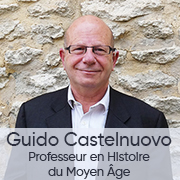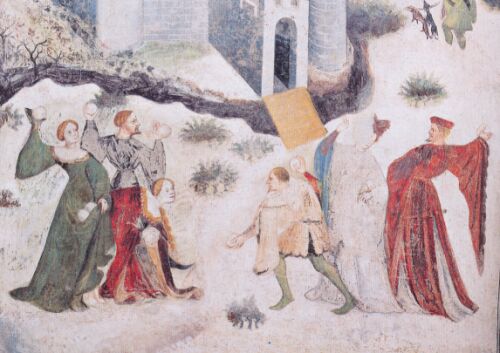[Portrait] Guido Castelnuovo, professor of medieval history and director of the Avignon University Editions
What is your research about?
In history, I am particularly interested in the last centuries of the Middle Ages (from the XIIIᵉ in the XVᵉ century) and this, from a double geopolitical and sociocultural point of view. On the one hand, I have been working for more than thirty years on the world of principalities, their elites (lords, officers, notables) and their territorial anchorage, in particular in Savoy; on the other hand, I study the universe of Italian cities and their lay elites between the XIIᵉ and the XVIᵉ century. As director of the Éditions Universitaires d'Avignon, I strive to play a role as a conduit of knowledge within the university and between the university and the community.

What are your current scientific activities?
I am now engaged in a dual activity of research and dissemination. After the publication of a book resulting from my habilitation to direct research (Être noble dans la cité. Les noblesses italiennes en quête d'identité, Paris, 2014) I have continued to publish (between 4 and 6 contributions per year) on social and cultural themes which, from the Italy of the cities to the princely Savoy, always look at the question of power: who governs, when and how? And above all, what would be the complex identities (social, cultural, political) of the dominant elites? As for dissemination, it corresponds to my functions within the EUA: I contribute directly to the management of the four collections that make up the backbone of our university publishing house, which means that I have monitored the publication of some thirty books in five years.
Why did you choose to work in academic research?
It is very banal to write it, but it is above all a question of curiosity, of the attraction of the unknown (or the little known) that one wishes to understand or at least decipher. Curiosity then gives rise to a taste for handling documents, the source of all research (in archives, libraries, books). From these discoveries and the pleasure one takes in interpreting them comes, finally, the desire to communicate what one has learned, hence the enthusiasm, which is still mine, for the dissemination of research, through teaching or publishing.
What advice would you give to students who want to do research?
First piece of advice: make sure that this desire is not just theoretical but that it corresponds to a genuine requirement and tangible motivation. Second piece of advice: take the time to get to know the professional hazards of the research world (deadlines, research offers, salaries). Third piece of advice: perfect your work skills both independently and in a group setting, because it is essential to be balanced, motivated and innovative!
What object or image from your business best illustrates you?

This 'snowball fight' is frescoed in the heart of the castle (castello del Buonconsiglio) of the prince-bishop of Trento (northern Italy, perialpine region). The work is a telling testimony to Gothic art at the dawn of the 15th century.ᵉ This is a clear sign of the importance of princely cultural patronage, a strong indication of the importance of courtly leisure in the lifestyle of the elites of the time... and the announcement, so lively, of a search which is also, always, a joy.
The portraits
Mis à jour le 22 December 2022